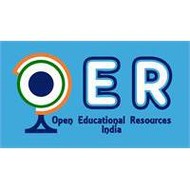
(View Complete Item Description)
If we take a constructivist approach to learning in libraries, then library spaces should be responsive to student needs. As Theodore Creighton points out in Setting the Stage for Staff Development, "the teacher’s responsibilities involve creating classroom environments where students think, explore, and construct meaning, while including opportunities for students to have social interaction." Similarly, library spaces, which allow support for both classes and "free-range" learning should do the same. In a previous OER Commons module by this author on library space design, students studied methods for gathering student input into design. The next step is to begin incorporating that input into the actual design process and to apply input to the space as a whole. Too often librarians start with furniture rather than starting with the purposes and mission of the program and space. As Malcolm Brown points out,"Creating a vision for learning and learning spaces is a powerful leverage point; it informs almost all other decisions about learning space design. A vision also allows us to effectively articulate to all constituents what we are trying to accomplish. The vision helps organize all participants in the design and implementation of these spaces as well as the activities they support. Simply installing wireless access points and fresh carpeting isn't enough if done in isolation; such improvements pay real dividends only if they are in concert with the institution's overall teaching and learning objectives." (Learning Spaces)Prospective librarians may not have a current space to design, but they can begin envisioning space as a construct that incorporates user needs and wants and that drives program goals, and begin to think about spaces as a whole. This module particularly focuses on ideas contained in the book Language of School Design(Nair and Fielding) and work by Ewan McIntosh (notosh.org). Both works ask library designers to think of spaces in terms of zones and how those zones make a variety of student learning possible. A series of readings and recordings will provide an introduction to these concepts with examples. School Librarian Competencies , 4, 5, and 10http://researchguides.austincc.edu/c.php?g=554360&p=3891603ISTE Educator Standards 2 and 5https://www.iste.org/standards/standards/for-educators
Material Type:
Module
Author:
Carolyn Foote




















